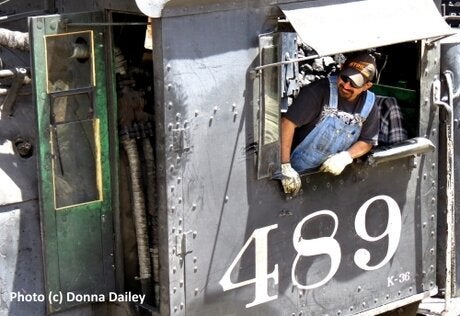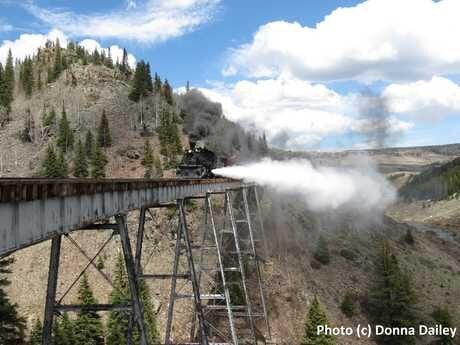
The noise of a train whistle blowing in the night is one of the most evocative sounds in America. It's a haunting sound that makes any traveller want to turn into a hobo, jump aboard, and go wherever the train tracks take you.
And now, whenever I'm in America and hear that lonesome whistle blow, I'll be trying to work out what the train's trying to tell me. Until a recent ride on the Cumbres and Toltec Scenic Railroad, I'd no idea that the train wasn't whistling just for the heck of it, but that each noise and combination means something.
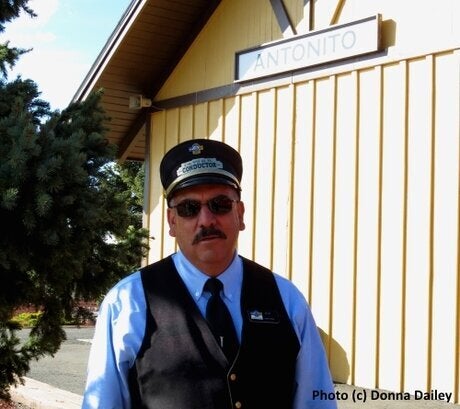
Conductor Ray Martinez
'When you're waiting to set off, four whistles means "Get on Board",' the conductor Ray Martinez tells me, after the engineer has blown four whistles. So, all aboard it is, and two more whistles means the train's moving forward.. Later I ask Ray, who's been working on the railroad since 1974, what some of the other signals mean.
'An S sign at the side of the track means a station's coming up,' Ray explains. 'The engineer has to blow one long whistle to ask me if we're stopping at that station. It's the conductor's discretion as to whether the train stops or not, so I let him know. Two whistles then tells everyone on the train that we're not stopping. One long and three short says we are stopping. The engineer might also use the whistle as we're coming to a bend. Two long whistles followed by a short one then another long one means a railroad crossing's coming up. If we approach a tunnel then the engineer gives one long and one short, which means we're coming in so you'd better get out!'
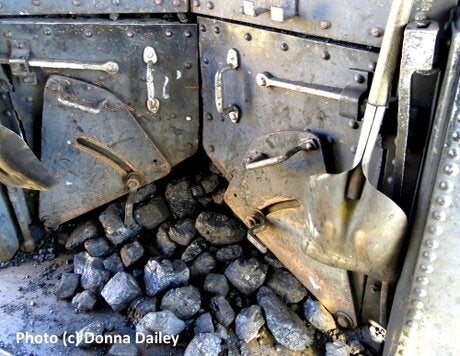
That's a lot of whistles to blow on the train's journey from the station at Antonito in Colorado, up and over the Cumbres Pass, which is 10,022ft high in the San Juan Mountains of southern Colorado, and down again to the little town of Chama in New Mexico. The train crosses the Colorado/New Mexico border eleven times during the course of its meandering journey through the remote mountain landscape.
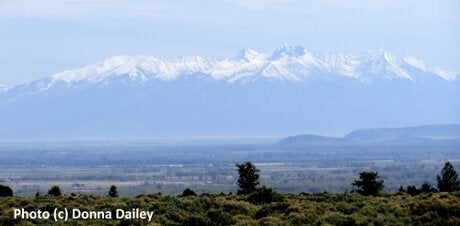
The train is seen as such an important attraction in the area that it's now jointly owned by the states of Colorado and New Mexico. Funds are raised by the 2,500 Friends of the Cumbres and Toltec Scenic Railroad, who over the years have raised $3 million to keep it going, and every summer 3,400 volunteers turn out to help run it. It's the kind of selfless effort that the USA excels at.
So why this love for a train ride? Partly it's the scenery, partly it's the history, and partly it's the sheer joy that steam trains seem to generate in large numbers of people. The train line re-opened in 1970 so celebrates its 45th anniversary this year. Its history goes back much further than that, of course, as a docent on the train, Bob Ross, explains.
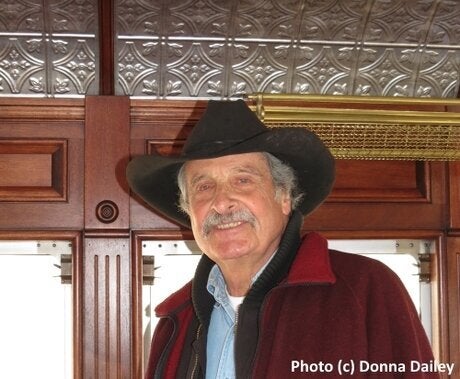
Bob Ross
'In 1870 General Palmer married a gal from England. He went to Ffestiniog in Wales on their honeymoon, and saw the railway there that was used to bring slate down from the slate mines in the mountains. He decided he would build a narrow-gauge railway through the mountains here because of the silver mining. You can't get a regular gauge through the mountains. You can't make sharp curves on standard gauge. You need narrow gauge in these mountains. We're 3ft, Ffestiniog was about 2ft and standard is 4'8". So they built this line in 9 months, and it ran continuously till the 1960s. The line kept going because after the silver was gone they picked up timber, livestock, and later oil was discovered and that kept the train going till the 1960s.'
The train line re-opened as a scenic railroad in 1970, though in the old days carried some notable characters - people like Wyatt Earp, Bat Masterson, Doc Holliday, and Butch Cassidy and the Sundance Kid. Despite going through wild land that was home to three different Native American tribes, the Utes, the Apaches and the Navajo, the train never got robbed of its precious cargo.
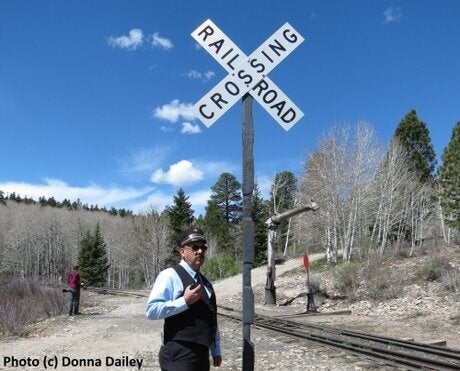
It's a history you can feel, as the train sets off from Antonito through scrubland where occasional small herds of pronghorn scatter through the sagebrush. 'I've seen bears and mountain lions,' says Bob, 'but they tend to keep out of the way. You're more likely to see elk and mule deer.'
We rise into the hills where trees on the horizon look like they could be Apache warriors, watching our progress. In the further distance are snow-capped mountains, and the tracks wind through dense aspen groves and cut through tunnels hacked through the mountains. We pass a dormant volcano, and hear how the Hangman's Trestle got its name.
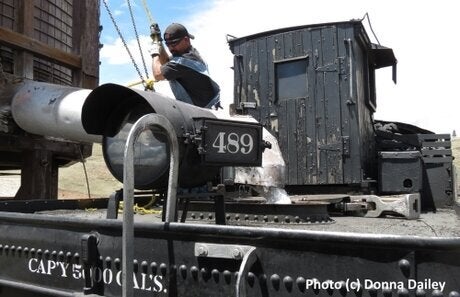
The train stops several times to take on water into its 500-gallon tank, and we get off to stretch our legs, breathe in the mountain air and admire the scenery. One of the water tanks was built in 1893 and still works, while another can be seen in the first Indiana Jones movie where the railroad played a starring role as a circus train.
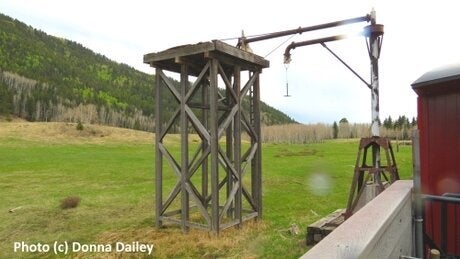
Indiana Jones Jumped Here
The railroad deserves to be a movie star. It was a day filled with wildlife and mountains, cowboys and indians, romance and humour. It was a day that was a handshake with history.
More Information
To find out more about the Cumbres and Toltec Scenic Railroad, and to book tickets, visit the website: http://cumbrestoltec.com.
Getting There
To get to either end of the railroad you'll need a car, and the following companies offer fly-drive holidays to this part of the USA from the UK: North America Travel Service, American Sky and Audley Travel.
The Author
Mike Gerrard is an award-winning travel writer who specialises in writing about the USA. He divides his time between the UK and Arizona, and is co-editor off the 101 USA Holidays website.
The Photos
All photos (c) Donna Dailey.
